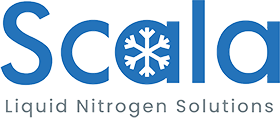Home / All / Sales Cases /
Liquid Nitrogen Supply for National Astronomical Observatories on Tibetan Plateau
Liquid Nitrogen Supply for National Astronomical Observatories on Tibetan Plateau

Liquid Nitrogen Supply for National Astronomical Observatories on Tibetan Plateau
Sean. Wu
General Manager of Scala Corp.

Abstract.
Lenghu, a tiny town with about 500 permanent residents at an average altitude of 2,800 meters, has draw worldwide stargazers with a state-of-the-art observatory site located in northwest China's Qinghai Province.
Top astronomers from National Astronomical Observatores have chosen the area as an ideal observatory site, thanks to its clear night skies, stable atmospheric conditions and dry climate comparable to several globally-renowned observatories.
To make sure the advanced astronomical telescope working, key part of the camera need to be cooled by liquid nitrogen. However, the nearest liquid nitrogen supply station is 1,000km away. Scala's on site liquid nitrogen generator provides a perfect solution.
Cutting-edge telescopes
The world's best astronomical observatories are mainly located in the Western Hemisphere, in high-altitude places like the summit of Mauna Kea in Hawaii, La Palma in the Canary Islands, and the Cerro Paranal summit in the Atacama Desert in Chile. But there are pristine locations with clear views of the sky in the East, too. And a team of Chinese astronomers are now making the case for building an observatory in the Tibetan Plateau—part of the larger region of Asia that's commonly called the "roof of the world."
China's top astronomers have chosen the area as an ideal observatory site, thanks to its clear night skies, stable atmospheric conditions and dry climate comparable to several globally-renowned observatories.
Construction of the Lenghu site started in 2018. Upon its completion it will house at least nine optical astronomical telescope projects including some 30 telescopes, with an investment of nearly 2 billion yuan (about 289 million U.S. dollars).
Among these newly-built projects, a new solar telescope is in the trial run stage.
The Accurate Infrared Magnetic Field Measurements of the Sun (AIMS) is the first solar magnetic-field telescope working in the mid-infrared wavelength in the world, said Wang Dongguang, chief engineer of CAS's Huairou Solar Observing Station of National Astronomical Observatories.
Solar observations in the mid-infrared range have been a challenge for worldwide astronomers, Wang said. The new facility is expected to obtain highly accurate data of the solar magnetic field, mid-infrared imaging and spectrum.

Another project, the Stellar Observations Network Group (SONG) project, with a total investment of 30 million yuan, is undergoing dome installation.
Once completed, it will join seven other telescopes worldwide to study the internal structure of stars and explore extrasolar planetary systems, said Deng, Chinese representative of the steering committee of the SONG project that involves about 20 countries.
The Multiplexed Survey Telescope (MUST) construction project was also launched in Lenghu on 2022. The 6.5-meter MUST, developed by Tsinghua University, will be the largest telescope in Lenghu upon completion. Scientists hope to make breakthroughs in dark energy evolution, gravitational wave cosmology and galaxy formation.
To keep the cutting-edge telescopes running in perfect condition, some key part need to be cooled by liquid nitrogen. However, the nearest liquid nitrogen supply station is 1,000km away. It was impossible to relay on the long distance supply.
Scala's liquid nitrogen
On the construction of the site, the scientists contact Scala for a constant and reliable liquid nitrogen solution. Upon discussions and studies, we suggested our air-cooled liquid nitrogen generator. After many efforts, the liquid nitrogen was delivered and installed successfully.

Performance
Since the liquid nitrogen generator was installed on 2023, it has been working in perfect condition over a whole year with constant output of 30 liters per day. It has contributed a lot to the successful operation of the observatory site loats at the "roof of the world".
Case grouping
Are you looking for a reliable liquid nitrogen supplier?
We can quickly provide customers with market analysis, technical support and customized services.Please send your message to us
- Name
- Tel
- *Title
- *Content


